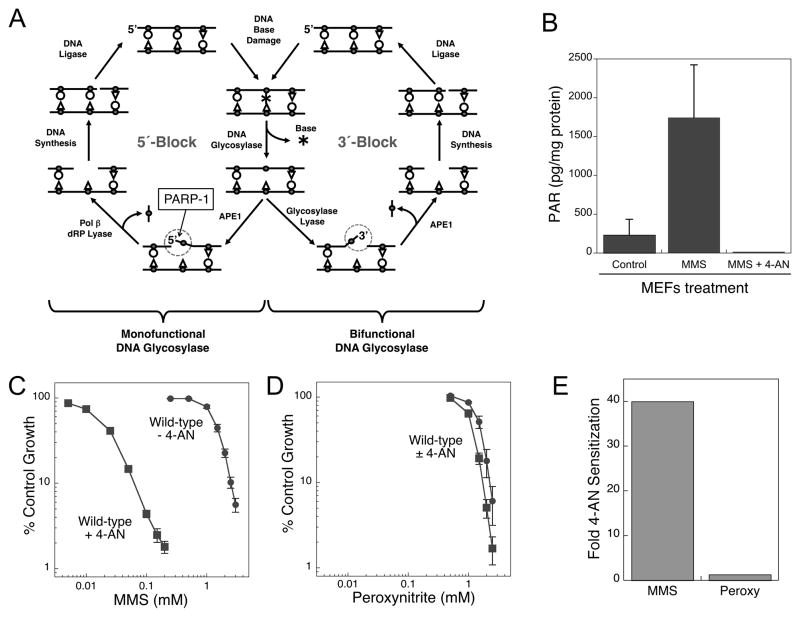Figure 1.
A, Scheme of pol β-dependent BER initiated by a monofunctional (left side) or bifunctional (right side) DNA glycosylase showing formation of 5′-or 3′-blocking groups (circled), respectively, in repair intermediates. The specific interaction between PARP-1 and the5′-dRP-containing intermediate is indicated. B, Inhibitory effect of 4-AN (10 μM) on PAR synthesis in MMS-treated MEFs (10 mM for 20 min at 4 °C) as measured by a commercial ELISA assay (Trevigen). C, Sensitivity of wild-type MEFs to a 1 h exposure to MMS (circles) and the sensitization obtained by co-treatment with 4-AN (10 μM for 24 h; squares). D, Sensitivity of wild-type mouse fibroblasts to a 1 h exposure to peroxynitrite (circles) and the absence of sensitization provided by co-treatment with 4-AN(10 μM for 24 h; squares). The plot was drawn to the same scale as in C. Cell sensitivity was obtained by growth inhibition assays as described previously (12). E, Comparison of 4-AN-mediated fold-sensitization of wild-type MEFs to MMS (40-fold) and peroxynitrite (negligible).

